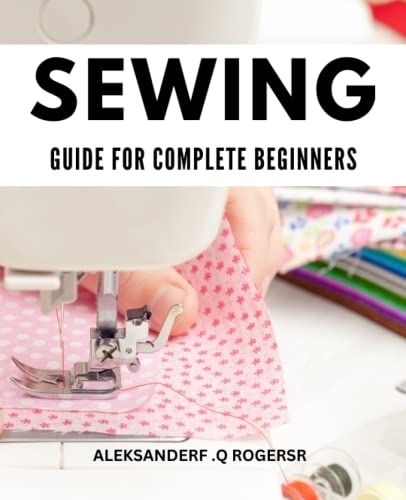There’s something so satisfying about creating your own clothing, especially when it’s as effortlessly stylish as a kimono jacket. With its timeless appeal and relaxed fit, it’s the perfect piece to add a touch of elegance to any outfit. Plus, sewing one yourself means you get to choose the fabric, colors, and little details that make it uniquely yours.
When I first made a kimono jacket, I was amazed at how simple yet rewarding the process was. Whether you’re a seasoned sewer or just starting out, this project is approachable and fun. It’s all about combining creativity with practicality to craft something you’ll actually love wearing.
Choosing the Right Fabric
The fabric sets the foundation for your kimono jacket. Selecting the right material ensures both comfort and style in the finished piece.
Fabric Types for Kimono Jackets
- Cotton: Lightweight cotton works well for beginners. It’s easy to handle, breathable, and perfect for casual wear. Fabrics like cotton broadcloth or quilting cotton are common options.
- Linen: Best for summer, linen adds a crisp, natural texture to your kimono. It softens with each wash but can wrinkle easily.
- Silk: Authentic kimonos often use silk. Satin silk adds elegance but requires more skill due to its slippery nature.
- Rayon: Similar to silk in its drape, rayon is affordable and easier to sew. It flows beautifully, making it ideal for statement pieces.
- Wool: Wool and wool blends provide warmth for colder seasons. Lightweight wool gabardine or crepe can keep the jacket structured yet cozy.
Tips for Selecting the Perfect Fabric
- Purpose and Season: Match your fabric to when and where you’ll wear the jacket. For summer, pick breathable materials like cotton or linen, while winter calls for wool or heavier blends.
- Drape and Weight: Choose a fabric with a good drape for a classic kimono feel. Test its movement by holding a corner and watching how it falls. Heavier fabrics work for structured looks; lightweight fabrics offer flow.
- Pattern and Color: Large prints and bold patterns complement the simplicity of the kimono design. Look for florals, geometric motifs, or solid hues that fit your style.
- Ease of Sewing: Beginners can start with stable fabrics like cotton. Intermediate sewers might experiment with materials like rayon or silk after gaining confidence.
- Pre-Washing: Always pre-wash your fabric to account for shrinkage before cutting. This ensures the final fit remains accurate.
The right fabric transforms your kimono jacket into a versatile and stylish garment.
Essential Tools and Materials
Creating a kimono jacket starts with having the right tools and materials. These essentials make the process smoother and more enjoyable.
Must-Have Sewing Tools
Accurate measuring and clean cuts are key to sewing success. I rely on a good quality tape measure and a sturdy pair of fabric scissors for precise work. A rotary cutter with a cutting mat speeds up cutting larger pieces. Pins or clips come in handy for securing fabric layers.
Reliable stitching requires a sewing machine. I suggest one with adjustable stitch settings for versatility. A seam ripper is crucial for fixing mistakes. Tailor’s chalk or fabric markers help mark patterns and seam allowances.
For finishing touches, scissors for trimming threads and an ironing board with a steam iron are essential. Pressing seams during construction ensures a polished look.
Recommended Patterns and Kits
Using easy-to-follow patterns simplifies the process. I recommend starting with beginner-friendly kimono jacket patterns from brands like Simplicity or McCall’s. For a traditional style, Japanese brands such as The Assembly Line or Paper Theory offer fantastic options.
Pre-assembled sewing kits designed for kimono jackets are convenient. These often include fabrics, patterns, and thread, saving time on sourcing materials. Look for kits with clear instructions, especially if you’re new to sewing.
Step-by-Step Sewing Instructions
Crafting a kimono jacket combines simplicity with creativity. I’ve broken down the process into manageable steps to ensure every stitch contributes to a stylish and comfortable garment.
Cutting the Pattern Pieces
Precise cutting sets the foundation for a well-fitted jacket. I start by laying the fabric flat on a clean, smooth surface, ensuring the grain aligns correctly with the pattern instructions. Using my pre-selected kimono jacket pattern, I pin or clip the pages in place, avoiding fabric shifting. A rotary cutter or sharp fabric scissors works best for smooth, clean lines. I carefully cut each pattern piece, being sure to include seam allowances and any notches indicated in the pattern.
Assembling the Jacket
Proper assembly starts with pinning the pieces together. I pair the front and back pieces at the shoulder seams, pin them with the right sides facing, then sew using a straight stitch. I press the seams open for a polished look before attaching the side and sleeve sections. For the sleeves, I align the notches and ease them into the armholes, sewing carefully to avoid puckering.
To maintain even seams, I use tailor’s chalk to lightly mark stitch lines before sewing. For beginners, sewing slowly and checking alignment helps achieve clean results.

Adding the Finishing Touches
Finishing details elevate the jacket’s look. After sewing all seams, I trim excess fabric and serge or zigzag-stitch raw edges to prevent fraying. Next, I fold and press the hemline, using pins or clips to hold it in place, then sew with a straight stitch. I also add reinforcement stitching at points of stress, like underarms.
For decorative touches, I might add fabric trim, embroider around the neckline, or sew an inner lining for extra refinement. A final press with an iron smooths out wrinkles, ensuring the jacket looks its best.
Customizing Your Kimono Jacket
Customizing a kimono jacket lets you express your creativity while creating a one-of-a-kind garment. By using unique fabrics and decorative additions, you can elevate a simple jacket into a statement piece.
Incorporating Unique Fabric Designs
Choosing distinctive fabric prints or patterns can completely transform your jacket’s look. Bold floral prints make a striking statement, geometric patterns add a modern touch, and traditional Japanese-inspired designs create an authentic aesthetic. Mixing fabrics, such as pairing a solid color with a vibrant print for the sleeves or collar, results in a dynamic, contrasting style. It’s important to consider the fabric’s scale and orientation during cutting to align patterns seamlessly across seams.
Adding Embellishments and Trims
Embellishments and trims enhance your kimono jacket by adding texture and detail. I often use lace or fringe along the hem for a bohemian vibe, or satin piping on edges to give clean, polished lines. Embroidery, either hand-stitched or machine-made, adds a personal touch—think floral motifs on the back or geometric designs along the sleeves. You can also sew on decorative buttons or beads for subtle highlights. Be sure embellishments align with your fabric’s weight and drape to maintain balance and wearability.
Styling and Wearing Your Kimono Jacket
« Making a Fabric Advent Calendar for Christmas: DIY Guide to a Festive & Sustainable Tradition
Making a Bomber Jacket: A DIY Challenge to Craft Your Own Iconic Style Masterpiece »
A kimono jacket is versatile, blending effortlessly into casual and formal outfits. Thoughtful styling enhances its adaptability for various occasions and seasons.
Outfit Ideas and Pairings
Wearing a kimono jacket opens up endless styling possibilities. For a casual look, I pair it with a simple T-shirt and fitted jeans, letting the jacket stand out as the focal point. For a more polished ensemble, I layer it over a sheath dress or tailored trousers with a fitted top, adding structure to its relaxed silhouette. Light kimonos work beautifully as swimsuit cover-ups, while more textured pieces complement evening attire with statement jewelry or a clutch. Patterns, like florals or geometric prints, pair well with neutral basics for balance.
Seasonal Styling Tips
Each season inspires unique ways to wear a kimono jacket. During spring and summer, I favor lightweight fabrics like linen or cotton, worn over tanks or sundresses and paired with sandals. Silk or breezy rayon options drape elegantly in warm months. Fall calls for layering. I combine medium-weight kimonos with long sleeves, knit scarves, and boots for warmth. For winter, I design wool or heavy-lined versions to wear over turtlenecks or sweaters. Adding textured layers keeps the outfit cozy and chic. Accessories adjust a kimono jacket’s overall vibe to match shifts in weather.
Conclusion
Sewing a kimono jacket is such a rewarding experience. It’s not just about creating a stylish garment but also about expressing your creativity and personal style. With the right fabric, tools, and a bit of patience, you can craft a piece that’s uniquely yours.
Whether you’re a seasoned sewer or just starting out, this project offers the perfect blend of simplicity and versatility. Plus, the endless customization options make it even more exciting. I hope you feel inspired to dive in and create your own beautiful kimono jacket—it’s a journey worth taking!


















